1. Kerala’s Digital Literacy Feat: A Model for Inclusive Digital Empowerment – Governance
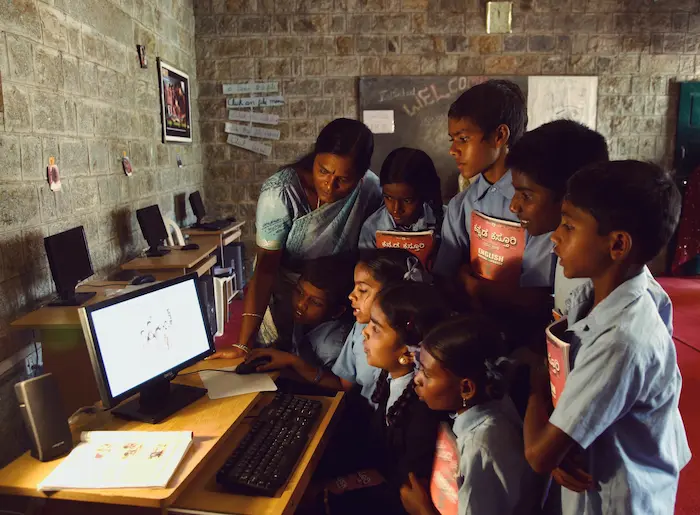
Why in News?
Kerala Chief Minister Pinarayi Vijayan declared Kerala as India’s first fully digitally literate state, following the successful completion of the first phase of the Digi Kerala programme.Over 21.87 lakh digitally illiterate individuals across the state were trained and certified, marking a significant milestone in grassroots digital inclusion.
Key Takeaways
- Kerala becomes the first state in India to achieve 100% digital literacy.
- Over 21.87 lakh people trained, including elderly citizens and marginalized groups.
- Initiative led by local self-government institutions and supported by volunteers.
- Training covered basic smartphone operations, online services, and digital safety.
- Inclusive and community-driven model with focus on accessibility and real-world digital needs.
Journey of the Programme: From Panchayat to State Level
Pilot Project: Digi Pullampara
- Started in Pullampara panchayat (Thiruvananthapuram).
- Targeted daily-wage workers and MGNREGS labourers who faced hurdles in using digital banking services.
- Out of 3,917 identified:
- 3,300 were trained through 15 activities in 3 modules.
- Achieved 96.18% success rate by September 2022.
Scaling Up: Digi Kerala Programme
- Inspired by Pullampara’s success, the program scaled statewide.
- Involved:
- 13 lakh+ women
- 8 lakh+ men
- 1,644 transgender persons
- Trained 2.57 lakh volunteers via a master trainer model.
- Delivered training at the grassroots via NSS students, Kudumbashree members, teachers, and social workers.
Inclusivity as a Core Principle
| Area | National Standard | Kerala’s Approach |
|---|---|---|
| Age Limit | Below 60 years | Included all age groups (including 100+ yrs) |
| Gender Participation | Often male-dominated | Majority women participants (60%+) |
| Technology Focus | Primarily desktop-based | Smartphone-based literacy |
| Marginalized Groups | Often excluded | Special focus on transgender, elderly, rural poor |
Key Features of the Training
- Basic smartphone use: Making calls, using WhatsApp, navigating apps.
- Accessing government services: e-Governance portals, payments, welfare schemes.
- Cybersecurity: Raising awareness on online frauds and digital hygiene.
- Community-based delivery: Schools, libraries, anganwadis, and homes as training centers.
Integration with Kerala’s Broader Digital Ecosystem
- KFON (Kerala Fibre Optic Network): Aims to provide free internet access to BPL families and public institutions.
- K-SMART Project: Digitizing local governance and municipal services.
- Alignment with UN SDG 9: Promotes inclusive and sustainable innovation and infrastructure.
Significance & Implications
| Area of Impact | Implication |
|---|---|
| Governance | Empowers citizens to access services, reduces middlemen |
| Digital Economy | Prepares population for digital transactions and platforms |
| Social Equity | Reduces urban–rural divide and class-based access to tech |
| Women Empowerment | Majority women participation leads to increased autonomy and confidence |
| Policy Model | Offers a replicable model for other Indian states and global South |
Exam Connect – Possible Questions
Prelims
- Which of the following features distinguishes Kerala’s Digi Kerala programme from national digital literacy schemes?
1. Inclusion of all age groups
2. Focus on smartphones instead of computers
3. Training conducted by private sector companies
4.Participation of community volunteers
A. 1 and 2 only
B. 1, 2, and 4 only
C. 2 and 3 only
D.All of the above
Correct Answer: B. 1, 2, and 4 only
- What is the correct sequence of the following initiatives?
1. KFON
2. Digi Kerala
3. Digi Pullampara
4. K-SMART
A. 3 → 2 → 1 → 4
B. 2 → 3 → 4 → 1
C. 3 → 2 → 4 → 1
D.3 → 2 → 1 → 4
Correct Answer: D.3 → 2 → 1 → 4
Mains
- Kerala’s approach to digital literacy has made inclusivity the cornerstone of governance. Discuss how state-level innovation can transform access to digital public services.
- “Digital empowerment is no longer a luxury but a necessity for democratic governance.” Evaluate in light of the Digi Kerala initiative.
- How can local self-government bodies play a transformative role in delivering digital inclusion in rural India? Support your answer with examples from Kerala’s Digi Pullampara model.
2. Adi Vaani: AI-Powered Language Translator for Tribal Languages – Governance
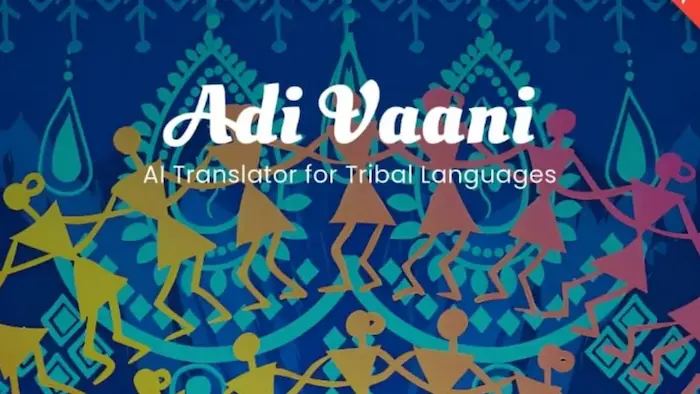
Why in News?
The Ministry of Tribal Affairs has launched the Beta version of “Adi Vaani”, India’s first AI-powered translation tool dedicated to supporting tribal languages.
It aims to revitalize endangered tribal languages, promote inclusion, and bridge communication gaps between tribal and non-tribal populations.
Key Takeaways
What is Adi Vaani?
- India’s first AI-based tribal language translator.
- Converts text and speech between Hindi/English and select tribal languages.
- Supports real-time translation, language learning, and digital preservation of tribal heritage.
Project Details
| Element | Description |
|---|---|
| Led by | Consortium: IIT Delhi, BITS Pilani, IIIT Hyderabad, IIIT Nava Raipur |
| Collaborators | Tribal Research Institutes (TRIs) across India |
| Languages Supported | Santali (Odisha), Bhili (Madhya Pradesh), Mundari (Jharkhand), Gondi (Chhattisgarh) |
| Methodology | Uses AI models (e.g., No Language Left Behind and IndicTrans2) |
| Community Role | Tribal communities involved in data collection and validation |
Functional Features of Adi Vaani
| Feature | Purpose |
|---|---|
| Text ↔ Text | Translating written materials |
| Text ↔ Speech | Aiding in communication and accessibility |
| Speech ↔ Text / Speech ↔ Speech | Real-time voice translation |
| OCR (Optical Character Recognition) | Digitizes manuscripts and educational materials |
| Bilingual Dictionaries | Enhances vocabulary and comprehension |
| Subtitles for Key Speeches | Translates PM’s speeches and health advisories into tribal languages |
Objectives of Adi Vaani
- Bridge communication gaps between tribal and mainstream populations.
- Preserve oral traditions and cultural heritage through digital documentation.
- Improve healthcare and civic communication in tribal regions.
- Support education through interactive learning tools for tribal students.
- Raise awareness of government schemes and public messages in local dialects.
Technological Backbone
- Uses low-resource language AI models, capable of handling:
- Morphologically rich tribal languages
- Code-switching and dialect variations
- Based on Meta’s NLLB model and IndicTrans2, developed for Indian languages.
Significance for Governance
| Area | Governance Impact |
|---|---|
| Tribal Welfare | Promotes inclusive development, especially in communication and education |
| Digital Inclusion | Extends Digital India goals to tribal and rural communities |
| Policy Awareness | Helps spread government schemes like FRA, PVTG welfare, and healthcare |
| Language Rights | Aligns with constitutional values of linguistic diversity and cultural preservation |
Broader Implications
- India has over 700 tribal communities, many with endangered languages.
- Language loss leads to cultural erasure, loss of identity, and weakened social cohesion.
- Adi Vaani becomes a model for balancing innovation with heritage.
Exam Connect – Possible Questions
Prelims
- Which of the following features are part of the “Adi Vaani” platform?
1. Speech-to-Text Translation
2. OCR for digitizing tribal manuscripts
3. Translation between tribal languages and English/Hindi
4. Virtual Reality learning tools
A. 1, 2 and 3 only
B. 2, 3 and 4 only
C. 1 and 4 only
D. All of the above
Correct Answer: A. 1, 2 and 3 only
- Which tribal languages are supported in the Beta version of the Adi Vaani platform?
A. Bhili, Gondi, Tulu, Khasi
B. Mundari, Bhili, Gondi, Santali
C. Gond, Toda, Khasi, Santali
D. Santhali, Garo, Mizo, Bhili
Correct Answer: B. Mundari, Bhili, Gondi, Santali
Mains
- Discuss the role of AI-based tools like Adi Vaani in bridging the digital and cultural divide in India. How can such technologies support tribal empowerment?
- Language is more than a communication tool—it is a vessel of culture and identity. In light of this, analyze how governance can support the preservation of tribal languages in India.
- Examine the relevance of community participation in the success of technology-driven welfare initiatives, using Adi Vaani as a case study.
3. Gangotri Glacier Shows Signs of Earlier Snowmelt – Environment
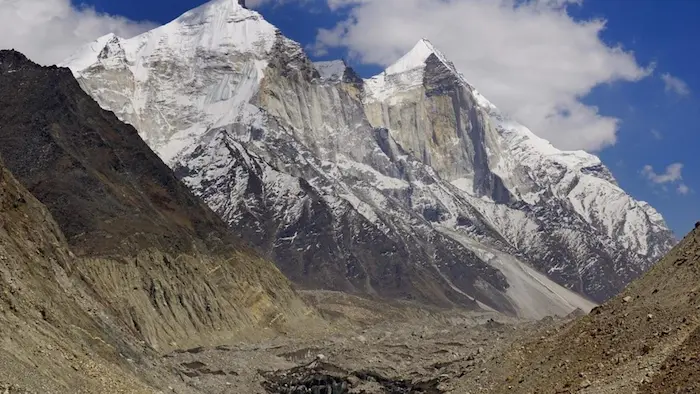
Why in News?
A recent study on the Gangotri Glacier System (GGS), source of the Bhagirathi River in the central Himalayas, has revealed signs of earlier snowmelt and shifting discharge patterns, linked to climate change. The findings raise concerns over long-term water security, ecosystem stability, and the sustainability of glacier-fed river basins in the Himalayan region.
Key Takeaways
- Gangotri Glacier is part of the upper Ganga basin, a major water source for northern India.
- A decadal shift has been observed:
Discharge peaks have moved from August to July since 1990. - Primary cause: Reduced winter precipitation + early summer snowmelt.
Composition of the Gangotri Glacier System (GGS)
| Glacier Name | Area (km²) |
|---|---|
| Meru | 7 |
| Raktavaran | 30 |
| Chaturangi | 75 |
| Gangotri | 140 (largest) |
| Total Area | ~549 km² Glacierized Area: ~48% Elevation Range: 3,767 m – 7,072 m |
Climatic Inputs to the Glacier System
- Precipitation Sources:
- Western Disturbances: October to April
- Indian Summer Monsoon: May to September
- Average Seasonal Rainfall: ~260 mm
- Mean Temperature (2000–2003): ~9.4°C
Findings from the Study (1980–2020)
- Published in: Journal of the Indian Society of Remote Sensing
- Tools Used:
- SPHY Model (Spatial Processes in Hydrology)
- IMDAA Dataset (Indian Monsoon Data Assimilation and Analysis)
Key Results:
| Parameter | Value/Trend |
|---|---|
| Peak Discharge | July (129 m³/s) – shifted from August post-1990 |
| Mean Annual Discharge | 28 ± 1.9 m³/s |
| Source Contribution | Snowmelt (64%) > Glacier Melt (21%) > Rainfall (11%) > Base flow (4%) |
Environmental & Societal Implications
| Area of Concern | Implication |
|---|---|
| Water Security | Shifting discharge affects availability in downstream regions |
| Agriculture & Livelihoods | Glacier-fed irrigation systems face timing mismatch in water supply |
| Disaster Risks | Early melting may increase flash floods, glacial lake outbursts (GLOFs) |
| Biodiversity | Riverine and alpine ecosystems may be destabilized |
| Long-term River Flow | Retreating glaciers could lead to decreased flow volumes over time |
Broader Context – Hindu Kush Himalaya (HKH) Region
- Referred to as the “Third Pole” due to its vast snow and ice reserves.
- Feeds major rivers: Indus, Ganga, Brahmaputra
- Supports ~1.9 billion people through freshwater and ecosystem services.
- Highly sensitive to global warming, with glacial retreat rates accelerating.
Policy Takeaways
- Need for:
- High-altitude monitoring stations
- Real-time glacial and hydrological data
- Advanced glacier models integrated into water planning
- Community-based climate adaptation strategies
- Strengthening of early warning systems and watershed management
Exam Connect – Possible Questions
Prelims
- Which of the following is NOT a component of the Gangotri Glacier System (GGS)?
A. Meru
B.Chaturangi
C. Pindari
D. Raktavaran
Correct Answer: C. Pindari
(Explanation: Pindari is a separate glacier located in Kumaon Himalayas, not part of GGS)
- Which of the following statements about the Gangotri Glacier study is correct?
A. Glacier melt is the highest contributor to annual discharge.
B. Peak discharge shifted from July to August after 1990.
C. The SPHY model was used to simulate glacial discharge.
D. The study was conducted by the Indian Meteorological Department (IMD).
Correct Answer: C. The SPHY model was used to simulate glacial discharge.
Mains
- Discuss the significance of the Gangotri Glacier System in maintaining hydrological balance in the central Himalayas. How is climate change altering its discharge patterns?
- Glacial retreat in the Hindu Kush Himalayan region is a growing concern for South Asia. Examine its ecological and socio-economic consequences.
- “Shifting seasonal discharge patterns from Himalayan glaciers pose new challenges for water governance in India.” Explain with reference to recent findings on the Gangotri Glacier.
4. Supreme Court’s Social Media Regulation Order: Free Speech and Accountability – Polity
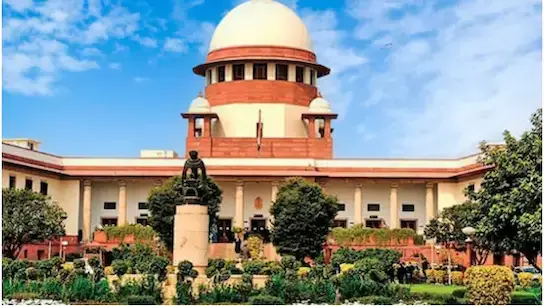
Why in News?
The Supreme Court of India has directed the Union Government to draft guidelines for regulating social media, emphasizing that Article 19(1)(a) (freedom of speech) must not be misused for commercial gain at the cost of dignity and decency.The court’s move aims to balance free speech with accountability in the digital age, particularly in cases where influencers or creators use speech for profit-driven content that may offend vulnerable groups.
Key Takeaways
- The Supreme Court has mandated the Centre to formulate social media regulations.
- Prompted by a petition concerning derogatory content targeting persons with disabilities (Spinal Muscular Atrophy – SMA).
- The court reaffirmed that free speech is not absolute, especially when used for commercial or harmful purposes.
Supreme Court’s Directive: Background & Context
| Component | Details |
|---|---|
| Origin of Case | Petition by a non-profit supporting individuals with SMA |
| Nature of Complaint | Allegations of derogatory content by comedians on social media |
| Court’s Actions | – Asked the Centre to consult National Broadcasters & Digital Association (NBDA) |
| Legal Issue Raised | Whether commercial content disguised as humour can be restricted under Article 19(2) |
Constitutional Framework on Free Speech
| Article | Provision |
|---|---|
| Article 19(1)(a) | Guarantees freedom of speech and expression |
| Article 19(2) | Allows reasonable restrictions on grounds of: Public order Decency/morality Defamation Security of the State Incitement to offences, etc. | |
Key Judicial Precedents
- Shreya Singhal v. Union of India (2015)
- Struck down Section 66A of IT Act
- Affirmed that offensive or disturbing speech is still protected
- Focused on the “clear and present danger” test for restrictions
- Hamdard Dawakhana v. Union of India (1959)
- Held that commercial advertisements are not protected under Article 19(1)(a)
- Tata Press v. MTNL (1995)
- Recognized commercial speech as protected when it serves public interest (e.g., information dissemination)
- A. Suresh v. State of Tamil Nadu (1997)
- Emphasized need to balance commercial expression with societal norms
Existing Framework: Regulation of Digital Media in India
- IT Rules, 2021 (Intermediary Guidelines and Digital Media Ethics Code):
- Mandates removal of obscene, defamatory, or harmful content
- Social media intermediaries must act upon complaints
- Creators/influencers are legally accountable for content that:
- Incites violence
- Defames individuals/groups
- Spreads misinformation
Free Speech in the Digital Age: Key Concerns
| Concern | Explanation |
|---|---|
| Content vs. Commerce | When free speech is used as marketing content, especially insensitive humour, it blurs the lines |
| Public Morality vs. Censorship | Guidelines must not become tools of state censorship |
| Platform Accountability | Platforms like YouTube, Instagram act as intermediaries, not editors |
| Vulnerable Groups | Content often targets minorities, disabled individuals, or uses stereotypes for engagement |
| Need for Balance | Regulation must ensure dignity, while not chilling dissent or creativity |
Why This Matters
- 491 million+ active social media users in India
- Lack of regulation can enable:
- Trolling and hate speech
- Defamatory “roast” culture
- Mockery of vulnerable communities
- But overregulation risks curbing satire, activism, and political critique
Broader Implications
- India must redefine media ethics in the digital economy
- The commercialization of content makes regulation complex
- Opportunity to develop:
- A rights-based, platform-neutral code of conduct
- Inclusive, participatory policymaking involving creators, civil society, and the judiciary
Exam Connect – Possible Questions
Prelims
- Which of the following are valid grounds for restricting freedom of speech under Article 19(2)?
1. National security
2. Public morality
3. Protection of minorities
4. Friendly relations with foreign states
A. 1 and 2 only
B. 1, 2, and 4 only
C.1, 3, and 4 only
D. All of the above
Correct Answer: B. 1, 2, and 4 only
(Note: “Protection of minorities” is not explicitly a ground under Article 19(2))
- Which case upheld that even offensive speech is protected under Article 19(1)(a), unless it causes incitement?
A. A. Suresh v. State of Tamil Nadu
B. Tata Press v. MTNL
C. Shreya Singhal v. Union of India
D. Hamdard Dawakhana v. Union of India
Correct Answer: C. Shreya Singhal v. Union of India
Mains
- Freedom of speech in the digital age must be balanced with accountability and dignity. Discuss in the context of the Supreme Court’s recent directive on social media regulation.
- Examine the legal and ethical challenges of regulating commercial speech on social media platforms in India. Suggest a way forward.
- “Regulating speech on digital platforms is necessary, but overregulation risks undermining democracy.” Analyze this statement with reference to Article 19 and IT Rules, 2021.
5. SC Calls for Regulating Social Media – Polity
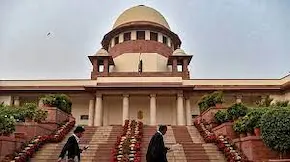
Why in News?
The Supreme Court of India has urged the Union Government to frame effective guidelines for social media regulation while hearing a case involving comedians accused of making derogatory remarks.
The Court emphasized that free speech must not be commercialized or abused in ways that harm the dignity of vulnerable groups, highlighting the need to balance liberty with accountability in the digital age.
Key Observations of the Supreme Court
- Commercialisation & Accountability
Social media influencers often monetize free speech. If misused, it overlaps with prohibited speech.
Vulnerable groups (disabled, women, children, minorities, senior citizens) require special protection. - Humour vs. Dignity
- Humour is valuable, but derogatory jokes perpetuate stigma and discrimination.
- Such speech undermines inclusivity, a constitutional value.
- Clear Boundaries in Digital Space
- Need to distinguish between:
- Free Speech (protected by Article 19(1)(a))
- Commercial Speech (regulated but partially protected)
- Prohibited Speech (falls under Article 19(2) restrictions)
- Need to distinguish between:
- Apology & Responsibility
- Comedians were directed to issue unconditional apologies.
- Court clarified: intention is not censorship, but balance between free speech & societal dignity.
Current Legal Framework for Social Media Regulation
Key Legislations
- IT Act, 2000
- Section 79(1): “Safe Harbour” for intermediaries (Facebook, X, Instagram, etc.).
- Section 69A: Government can block online content (sovereignty, security, public order).
- IT Rules, 2021 (Intermediary Guidelines & Digital Media Ethics Code)
- Mandates content moderation, user safety, and removal of unlawful content.
- Requires compliance officers and grievance redressal.
- 2023 Amendment
- Obligated intermediaries to remove false or misleading government-related content (currently stayed by SC).
Judicial Precedents
- Shreya Singhal v. Union of India (2015)
- Struck down Section 66A IT Act (vague, overbroad).
- Affirmed protection for speech unless it leads to incitement of violence.
- K.S. Puttaswamy v. Union of India (2017)
- Recognized privacy as a fundamental right.
- Influenced the Digital Personal Data Protection Act, 2023.
- Tata Press v. MTNL (1995)
- Acknowledged commercial speech as protected if it serves public interest.
Why is Social Media Regulation Needed?
- Protecting Vulnerable Groups – safeguard against cyberbullying, trolling, derogatory remarks.
- Curbing Misinformation & Hate Speech – fake news, deepfakes, extremist propaganda threaten democracy.
- Mental Health Concerns – endless scrolling, FOMO, curated identities → anxiety & depression.
- Influencer Accountability – regulate misleading promotions, scams, unsafe products.
- Data Privacy – unchecked data collection = privacy violations.
- Balancing Free Speech – uphold liberty but prevent misuse for profit or harm.
Key Challenges in Regulation
| Challenge | Issue |
|---|---|
| Volume & Anonymity | Billions of posts daily + anonymity = harder enforcement |
| Defining Harmful Content | Cultural diversity → blurred lines between “offensive” vs. “illegal” |
| Transparency Gaps | Lack of independent oversight of platform moderation |
| Free Speech vs. Censorship | Over-regulation risks chilling dissent |
| Cross-border Issues | Harmful content often originates abroad |
| Political Neutrality | Risk of bias in enforcement, undermining trust |
Way Forward
- Robust Legal-Policy Framework
- Update IT Act, 2000 → Digital India Act with judicial oversight.
- Algorithmic Accountability
- Audits, transparency reports, AI-driven moderation tools.
- Institutional Strengthening
- Improve cyber forensic capacity and monitoring systems.
- Digital Literacy & Ethics
- National campaigns to counter fake news & promote safe usage.
- Multi-Stakeholder Governance
- Collaboration among government, judiciary, civil society, industry, global partners.
Exam Connect – Possible Questions
Prelims
- Which of the following are grounds under Article 19(2) for restricting freedom of speech?
1. Decency and morality
2. Public health
3. Friendly relations with foreign states
4. Protection of minorities
A. 1 and 3 only
B. 1, 2 and 3 only
C. 1, 3 and 4 only
D. All of the above
Correct Answer: A. 1 and 3 only
- Which of the following provisions grant “safe harbour” protection to social media intermediaries?
A. Section 66A, IT Act 2000
B. Section 69A, IT Act 2000
C. Section 79(1), IT Act 2000
D. Section 43A, IT Act 2000
Correct Answer: C. Section 79(1), IT Act 2000
Mains
- “Free speech on digital platforms cannot become a license for harming dignity.” In light of the Supreme Court’s recent observations, discuss how India should regulate social media while protecting constitutional freedoms.
- Evaluate the challenges of regulating social media platforms in India. Suggest institutional and legal reforms to ensure accountability without curbing dissent.
- Digital literacy and ethics are as important as legal frameworks in regulating social media. Critically comment.
6. Samudrayaan Project – Defence & Technology
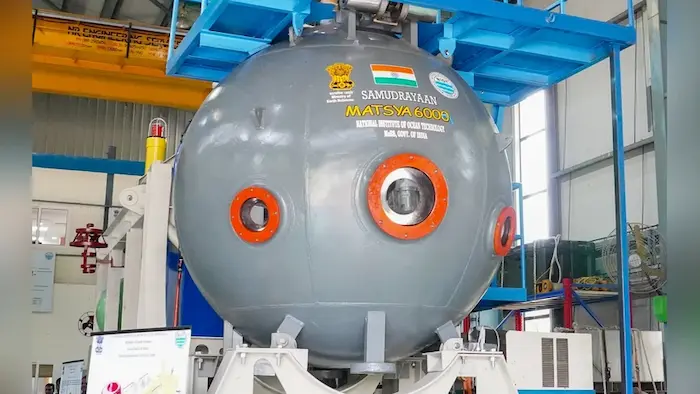
Why in News?
- Two Indian aquanauts recently undertook a training dive in the Atlantic Ocean using France’s Nautile submersible.
- This exercise is part of the preparatory phase for India’s Samudrayaan Project.
What is the Samudrayaan Project?
- India’s first human deep-sea mission.
- Aim: Send three aquanauts onboard the Matsya-6000 submersible to a depth of 6,000 meters by 2027.
- Part of the larger Deep Ocean Mission (2021–2026) under the Ministry of Earth Sciences (MoES).
- Strategic Goal: Place India among an elite group of nations (USA, Russia, China, Japan, France) with manned deep-sea exploration capacity.
Objectives of the Samudrayaan Project
- Technology Development
- Submersibles, ocean robotics, deep-sea sensors, and autonomous systems.
- Mineral Surveys
- Explore and map polymetallic nodules rich in:
- Iron, Manganese, Nickel, Cobalt, Rare Earth Elements.
- Explore and map polymetallic nodules rich in:
- Scientific Research
- Study of deep-sea biodiversity and ecology.
- Climate change impact assessment through deep ocean data.
- Blue Economy Advancement
- Support for marine biotechnology, fishing, shipping, and energy resources.
Matsya-6000: India’s Manned Submersible
| Feature | Details |
|---|---|
| Crew Capacity | 3 aquanauts |
| Duration | 12 hours (operational), 96 hours (emergency) |
| Material | Titanium alloy spherical hull |
| Pressure Resistance | Withstands ~600 bar at 6,000 m depth |
| Temperature Range | Operates at -3°C |
| Safety Features | Life-support systems, acoustic comms, drop-weight escape mechanism, Li-Po batteries, health-monitoring bio-vests |
| Developed by | NIOT (lead), MoES, with support from VSSC–ISRO |
Deep Ocean Mission (2021–2026)
- Launched by: Ministry of Earth Sciences (MoES)
- Duration: 5 years
- Part of India’s Blue Economy Vision
Key Components:
- Development of Manned Submersible (Matsya-6000).
- Exploration of Polymetallic Nodules in the Central Indian Ocean Basin.
- Development of Deep-sea Mining Tech (robotic mining systems).
- Marine Biodiversity & Conservation Studies.
- Ocean Climate Change Research.
- Marine Biotech Applications for pharmaceuticals & bioresources.
Strategic Importance of Samudrayaan
- Blue Economy Leadership: Unlocks resources for energy, minerals, and biotechnology.
- Resource Security: Reduces import dependence for cobalt, nickel, REEs vital for EV batteries & semiconductors.
- Tech Advancement: Leverages expertise from ISRO, NIOT → synergy between space & ocean exploration.
- Geopolitical Edge: Strengthens India’s role in global ocean governance under UNCLOS.
- Sustainability: Aligns with UN Decade of Ocean Science (2021–2030).
Challenges
- Technical Risks: Human safety at 6,000 m depth.
- Environmental Concerns: Potential damage to fragile deep-sea ecosystems.
- High Costs: Complex R&D, technology acquisition, and operational expenses.
- Global Regulation: Need to comply with International Seabed Authority (ISA).
Exam Connect – Possible Questions
Prelims
- Which of the following statements about the Samudrayaan Project are correct?
1. It is part of India’s Deep Ocean Mission.
2. Matsya-6000 submersible is designed to carry six aquanauts.
3. It aims to explore polymetallic nodules in the Central Indian Ocean Basin.
A.1 and 2 only
B. 2 and 3 only
C.1 and 3 only
D. 1, 2 and 3
Correct Answer: C.1 and 3 only
- Which of the following minerals are commonly found in polymetallic nodules?
A.Uranium, Lithium, Cobalt, Nickel
B. Manganese, Cobalt, Nickel, Iron
C. Copper, Thorium, Zinc, Bauxite
D.Mica, Graphite, Silver, Lead
Correct Answer: B. Manganese, Cobalt, Nickel, Iron
Mains
- Discuss the objectives and significance of India’s Samudrayaan Project. How does it align with India’s Blue Economy strategy?
- Deep-sea exploration holds great promise but also significant environmental risks. Critically evaluate the challenges of the Samudrayaan Project in this context.
- “Samudrayaan marks a convergence of India’s space and ocean technologies.” Examine this statement in light of ISRO-NIOT collaboration.

